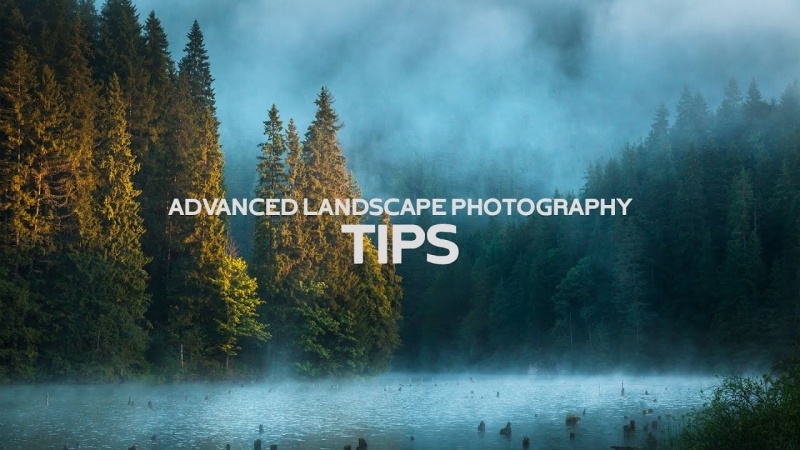Contents
Ever felt like your landscape photos don’t quite capture the magic you saw with your own eyes? You’re not alone, we’ve all been there! It can be a disappointing experience when you download the photos and realise that they don’t quite do the location justice. However, this is a skill that can be learnt and practised.
Landscape photographer Toma Bonciu knows exactly how it feels. In his years spent chasing light across fog-drenched forests and dramatic mountain peaks, he’s learned that the secret to truly breathtaking landscape photography lies beyond the basics. This video unpacks Toma’s most advanced, field-tested techniques to help photographers improve beyond the basics. From composition tweaks to gear choices, creative uses of filters, and mastering natural light, here’s how to take your landscape shots from good to unforgettable.
Go Beyond the Rule of Thirds: Master Advanced Composition
While the rule of thirds is a great starting point, Toma emphasises that depth and layers are what truly bring a landscape to life.
- Foreground Interest: A strong foreground element (like dark rocks or flowers) creates a sense of depth, guiding the viewer’s eye toward the background.
- Leading Lines: Use natural lines (roads, rivers, or mountain ridges) to create dynamic perspectives. Diagonal lines add movement, while curves (like a winding path) draw attention through the frame.
- Negative Space: Not just empty sky or water, negative space can be a field of similar elements (like foggy trees) with one standout subject (a lone yellow tree). This contrast makes the focal point pop.
Pro Tip: “Human elements (a cross on a mountain, a tiny figure) help convey scale, making vast landscapes feel even more dramatic.”
Use Filters Creatively: Capture What the Eye Can’t See
Many photographers rely on post-processing for exposure blending, but Toma swears by physical filters for in-camera perfection.
- ND Filters: Essential for long exposures, especially in harsh midday light. Toma carries 3-stop, 6-stop, 10-stop, and even 15-stop ND filters to smooth water or blur clouds.
- Graduated ND Filters: Crucial for balancing bright skies with darker foregrounds. His reversible 3-stop soft grad is perfect for sunrises and sunsets.
- Polarisers: Still a must for reducing glare and enhancing colours, especially in reflections.
Pro Tip: “Shooting with filters forces you to craft the image in the field, not just fix it later in Photoshop.”
Embrace Bad Weather: It’s Good for Your Photos
“Good weather is for tourists,” Toma laughs. Dramatic conditions like fog, storms, rain, or mist create unforgettable images.
- Post-Storm Light: Some of the most magical moments happen right after a storm, when clouds break and light pierces through.
- Fog & Mist: Perfect for adding mystery. Forests shrouded in fog or mountains peeking through clouds make for ethereal shots.
- Dark Clouds & Contrast: Stormy skies add intensity, especially in black-and-white photography.
Pro Tip: “If the forecast shows ‘few clouds’ with fog, wait, the sun will likely burn through, revealing stunning scenes.”
Scout Smart & Plan Ahead: Luck Favours the Prepared
Great landscape photos rarely happen by accident. Toma’s process includes:
- Google Earth Scouting: Before visiting a location, he studies the terrain to find unique angles.
- Avoiding Clichés: Instead of copying popular compositions, he seeks fresh perspectives like shooting low, using unconventional foregrounds, or framing differently.
- Timing: Knowing when light will hit a specific peak or valley ensures he’s in the right place at the right time.
Pro Tip: “Do the ‘postcard shot’ first, then explore. The best photos often come from unexpected angles.”
Light is Everything: Learn to See It Like a Painter
Light is the soul of landscape photography. Toma breaks it down into two categories:
Perfect Light (Golden Hour & Blue Hour)
- Sunrise/Sunset: Warm, directional light enhances textures and creates long shadows.
- Blue Hour: The eerie, cool tones before sunrise or after sunset add moodiness.
Midday Light (When Used Right)
- Storm Light: Dark clouds with bursts of sun create high-contrast drama.
- Cloudy Skies: Soft, even light is ideal for forests or waterfalls.
Pro Tip: “The viewer’s eye always goes to the brightest part of the frame, use light to control focus.”
Photography isn’t just about gear or settings. It’s about showing up, seeing differently, and staying curious. As Toma puts it, “Keep photographing, it’s the only way to get better.”
Whether you’re standing alone in a foggy forest or waiting for a storm to pass in the Dolomites, remember that every great shot starts with showing up, being present, and embracing the imperfect beauty of the moment. Check out the video below:

